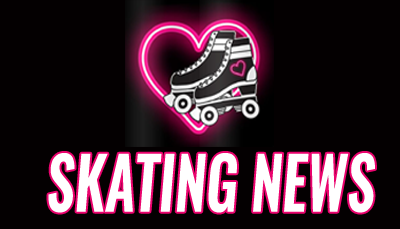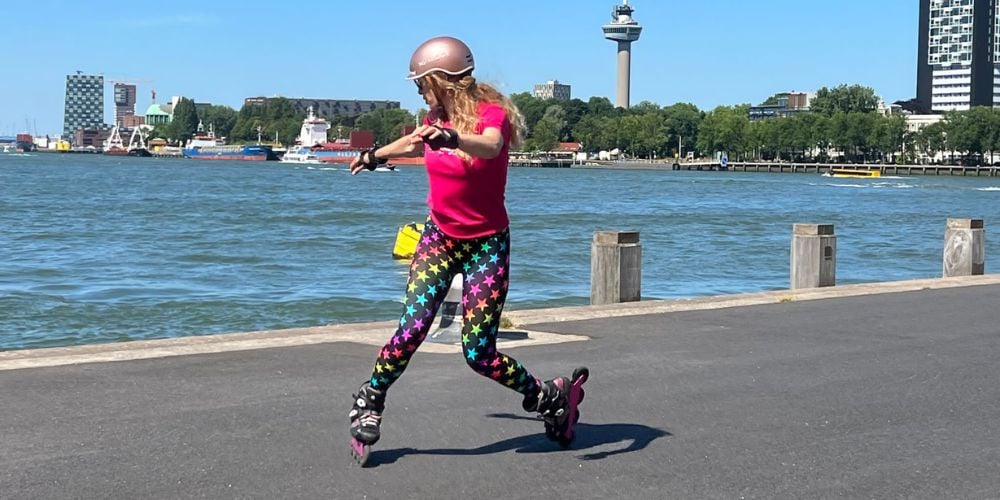Wizard skating is the new name given to a style of freestyle skating popularised by Canadian aggressive skater @LeonBasin and his friends from @Mushroomblading. They came out of the skate park and started using “flat ground” for tricks, transitions, jumps and flowing sequences of footwork. (For a thorough history of Leon’s journey and the origins of Wizard skating, check out the video link at the end of this Blog)
Leon designed the first wizard frame with a slight rocker (plus variable frame lengths & wheel options), to facilitate the manoeuvrability of the wizard footwork. This new “genre” of skating was born and has been taking the recreational, slalom and freestyle inline worlds by storm ever since.
But if you take a closer look at much of the footwork from wizard skating, you might recognise some classic artistic figure skating moves like mohawks, 3 turns of all kinds, crossovers & two footed transitions, combined into flowing sequences.
Wizard skating is an interesting blend of old and new skating influences. The curviness of the transitions and the sweeping one foot glides into transitions….. feel like artistic skating. But the confident, edgy (in both senses of the word), powerful (maybe slightly aggressive) style of good wizard skating adds a new element of interest and surprise. Plus of course the random use of urban architecture (walls, benches, ledges) and 2 wheel balances for added “wow” factor.
How are Wizard skating transitions named & described?
In Wizard skating (according to Leon and his friends), a “Gazelle” is a two footed transition on a curve (from forwards to backwards or backwards to forwards). Distinctions are made between “open & closed” gazelles or “fakie & forward” gazelles, but it can be confusing to try and picture what’s happening.
A ”Lion” is a one footed transition from forwards to backwards or backwards to forwards on a curve (and correctly done, scribes a “3” shape on the ground).
In artistic skating terminology a Gazelle is a two footed transition (from forwards to backwards or backwards to forwards) on a curve, scribing a “3” shape with skates slightly staggered in a Scissor position.
A Lion is a “3 turn” and it is further described by the standing leg side (left or right) and edge (outside or inside). This creates a very clear image in the mind, for example,
“Left Forward Outside 3 turn”.
As a professional coach for 22 years I’m in the process of making a new online course called “How to Wizard Skate”, and I’m using both terminologies for clarity. The Wizard skating names are fun but the artistic ones make more sense in my brain (but then I’m an ex-figure skater so that makes sense).
To make this point clear, I’ll share with you a text message I received from Skatefresh student (and recently joined instructor with Skatefresh) @hargreaves.sabine.
How easily are you able to picture her unique wizard transition combo/flow?
“Did such a cool combo last night: left forward outside 3 turn straight into inverted back Mohawk, to right forward inside edge, push to edge change to right forward outside 3 turn straight into back inverted Mohawk other side! Got it flowing after 2 hours!!
This is how figure skaters write up their footwork routines and choreography. So to Sabine this made sense. It’s so useful to be able to write down what steps you’re doing, in whatever terminology you are most familiar with, so you don’t forget.
Having your practice written down also allows you to work on several small “blocks” of footwork (a few transitions strung together), and then bolt those together to give you longer, impressive looking wizard flows.
Featuring;
History of Wizard Skating Video by Tom Moyse
Check out Asha’s Wizard ska,ng on social media;
Asha wears @endlessblading & @nnskates frames with @powerslidebrand Evos.

